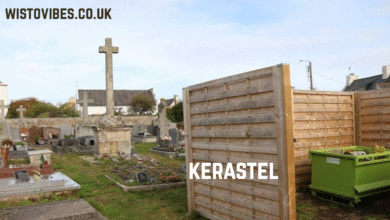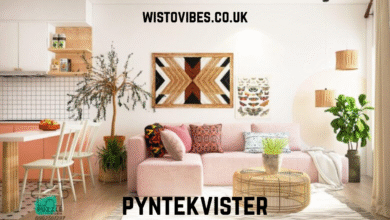Introduction: What is a Cat Activity Centre??
If you’re a cat parent, you’ve probably heard the term cat activity centre thrown around in conversations or seen it advertised in pet stores. But what exactly is a cat activity centre?? At its core, a cat activity centre is a purpose-built piece of feline furniture designed to keep your cat physically stimulated, mentally engaged, and behaviorally satisfied. These multi-functional structures come in many sizes, materials, and configurations but usually include scratching posts, platforms, hiding spots, and sometimes even hammocks or interactive toys.
The concept is not just about entertainment—it’s about well-being. Indoor cats especially benefit from having a dedicated space to climb, play, stretch, and rest. In this detailed guide, we explore everything you need to know about the cat activity centre, including why it’s important, what features to look for, and how it can transform your cat’s daily life.
The Purpose and Importance of a Cat Activity Centre
Many people underestimate how much stimulation cats need. Even though they sleep a lot—often up to 16 hours a day—when they are awake, they need outlets for their energy. A cat activity centre provides the perfect arena for a cat’s instincts: climbing, scratching, jumping, and observing their territory from a high vantage point.
Scratching is a natural behavior that cats use to mark territory, stretch their bodies, and maintain claw health. If your cat doesn’t have a dedicated scratching surface, your sofa or curtains may end up paying the price. A cat activity centre helps redirect this behavior to appropriate areas.
In addition, a good cat activity centre helps reduce boredom and anxiety. Cats that are left alone at home all day need mental stimulation to prevent destructive behaviors. With platforms to jump on, cubbies to hide in, and toys to bat around, a cat activity centre serves as a healthy distraction and an exercise outlet.
Features to Look For in a Cat Activity Centre
When shopping for or designing your own cat activity centre, consider your cat’s age, activity level, and preferences. Here are some essential components and features to look for:
1. Scratching Posts:
Almost all cat activity centres include one or more scratching surfaces made from sisal, carpet, or cardboard. These are crucial for maintaining your cat’s claws and marking territory.
2. Multiple Levels:
Cats love vertical spaces. Multi-tiered centres offer your cat different levels to climb, perch, and observe their surroundings. This mimics their instinct to seek high ground.
3. Hideouts and Tunnels:
Enclosed areas or covered nooks provide a sense of security, ideal for napping or playing hide-and-seek.
4. Toys and Interactive Elements:
Some activity centres come with dangling toys, feather attachments, or balls. These promote play and mental engagement.
5. Sturdiness and Safety:
A wobbly structure can be dangerous. Make sure the cat activity centre is stable, especially if you have a larger or more active cat.
6. Materials and Build Quality:
Non-toxic materials, soft carpeting, and durable fabrics ensure that the centre is safe and long-lasting.
How a Cat Activity Centre Benefits Indoor Cats
Indoor cats lead safer lives but often lack the excitement and variety of the outdoors. A cat activity centre helps fill that void by offering multiple types of enrichment in one compact structure.
Physical Health:
Climbing and jumping on the various platforms of a cat activity centre helps build muscle, improve coordination, and prevent obesity.
Mental Stimulation:
Interactive toys and hideouts offer puzzles and play scenarios that challenge your cat’s mind and keep them alert.
Behavior Management:
Cats with excess energy and no outlet may develop behavioral issues such as aggression, scratching furniture, or urinating outside the litter box. A cat activity centre can curb these problems by redirecting attention and energy.
Territorial Satisfaction:
Cats are territorial creatures, and having a dedicated space that’s “theirs” can reduce inter-cat tension in multi-cat households.
Choosing the Right Size and Design for Your Space
Not every home can accommodate a towering cat activity centre, but there are options to fit nearly any living situation. From compact wall-mounted shelves to full-floor jungle gyms, it’s all about matching your space and your cat’s needs.
If you live in a small apartment, a tall but narrow structure can offer vertical play without taking up too much floor space. Wall-mounted cat steps and hammocks are also good alternatives. For homes with more room, a wide base with multiple towers, hammocks, and ramps can offer hours of entertainment.
The aesthetics matter, too. Many modern cat activity centres come in sleek designs that blend with your home decor. Neutral tones, wood finishes, and minimalist styles make it easy to integrate them into your living room or bedroom without it looking like a pet store exploded.
Customizing a Cat Activity Centre for Multiple Cats
If you have more than one cat, consider investing in a larger cat activity centre or even combining multiple units to create a “cat wall” or indoor playground. Make sure each cat has access to their own space—such as separate sleeping nooks or scratching posts—to avoid territorial disputes.
You can also add extra toys, rotate hanging elements weekly, or install treat dispensers within the centre to keep things interesting over time. A bored cat is more likely to ignore the activity centre, so regularly changing or cleaning the elements keeps them engaged.
Maintenance and Cleaning Tips
To keep your cat activity centre in good condition, regular cleaning is important. Remove fur buildup, wipe down surfaces, and inspect for damage or loose parts. If a scratching post is worn down, consider replacing just that component rather than the entire structure.
Vacuum carpeted surfaces and wash any removable fabric. Not only does this keep your home looking neat, but it also prevents the buildup of allergens and odors.
FAQs About Cat Activity Centres
Q1: Do all cats need a cat activity centre??
While not all cats will use one the same way, most benefit from having some form of activity structure. It’s especially important for indoor cats or those living in apartments.
Q2: At what age can a kitten start using a cat activity centre??
Kittens can start using a cat activity centre as early as 8-10 weeks, provided the design is safe and accessible. Look for lower platforms and soft surfaces for younger cats.
Q3: Can I build a DIY cat activity centre??
Absolutely! Many cat owners build their own using wood, sisal rope, carpet remnants, and creativity. Just make sure it’s stable and made from non-toxic materials.
Q4: How do I get my cat interested in a new activity centre??
Sprinkle catnip, place favorite toys, or hide treats on the platforms. Positioning it near a window can also help, as cats love watching the outside world.
Q5: How long does a typical cat activity centre last??
With proper care, a good-quality cat activity centre can last several years. Some wear and tear on scratching posts is normal, but many parts are replaceable.
Final Thoughts on the Cat Activity Centre
So, what is a cat activity centre?? It’s more than just a fancy toy—it’s a comprehensive enrichment tool for your feline friend. Whether you have a rambunctious kitten, a lazy senior, or multiple cats under one roof, a well-chosen cat activity centre can dramatically improve their quality of life.
Investing in a cat activity centre is an investment in your cat’s happiness, health, and overall well-being. From reducing destructive behavior to promoting physical and mental exercise, this all-in-one solution is a must-have for any thoughtful pet owner.
Whether store-bought or homemade, simple or extravagant, the right cat activity centre can become your cat’s favorite place—and make your life a little easier, too.




